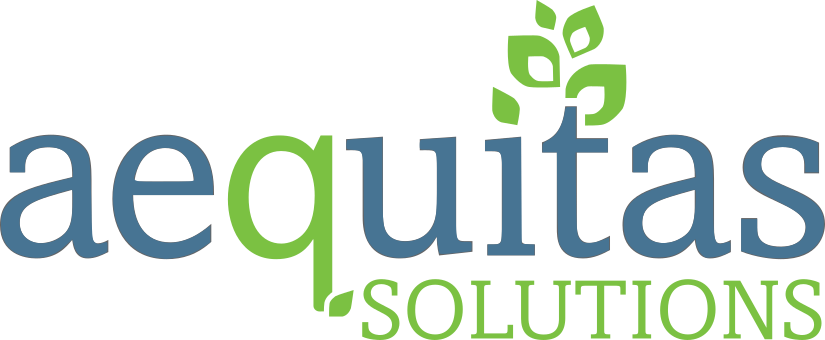The role of a Student Information System (SIS) has evolved beyond simple administrative functions and grade tracking. With a growing focus on holistically supporting students, modern SIS platforms should serve as comprehensive tools for managing student data and nurturing a student’s academic growth, emotional well-being, and social development.
This shift reflects a growing understanding that education is more than just students’ academic achievements. It’s about supporting students’ well-being and ensuring they have the social and emotional tools to succeed in the ever-changing world. By harnessing the power of data and fostering a connected learning environment, modern SIS platforms are becoming tools to help educators cultivate the whole student.
Understanding Student Wellness
Before diving into the role an SIS can play in nurturing the whole student, it’s important to understand the full picture of student wellness. Wellness goes beyond the absence of illness and encompasses well-being in several areas of life.
- Physical Wellness: Encouraging healthy habits such as regular exercise, proper nutrition, and adequate sleep.
- Emotional Wellness: Fostering emotional intelligence, self-awareness, and coping mechanisms to navigate stressors effectively.
- Social Wellness: Promoting positive relationships, fostering a sense of belonging, and encouraging effective communication and collaboration.
- Academic Wellness: Supporting intellectual growth, providing resources for academic success, and cultivating a love for learning.
- Environmental Wellness: Creating a safe, supportive, and sustainable environment for learning and growth.
By understanding the various aspects of student wellness, from physical health to academic success, educators can leverage their SIS in four key ways to personalize learning and goal setting, helping students achieve success with their education and ultimately, their well-being.
1. Personalized Learning & Goal Setting
An effective SIS can track various data points on students, from grades and interests to test scores and participation. This rich data can be harnessed to personalize learning paths and teaching approaches and, most importantly, create goals that resonate with each student’s unique interests and aspirations.
Studies show that students are more motivated and retain information when they feel a personal connection to their learning. This connection can be fostered by real-world applications of subject material, or by delving into specific topics that pique their curiosity.
By capturing student interests, preferred learning styles, and even post-graduation plans, the SIS can allow educators to recommend courses that align with a student’s strengths and passions. These features can also empower teachers to tailor lesson plans, catering to student interests and adapting their approach to better match preferred learning styles. By personalizing the learning experience, an SIS can contribute significantly to fostering academic wellness.
2. Improved Communication & Collaboration
Effective communication is crucial to student success. An SIS can facilitate this by providing a central platform for communication between students, teachers, and parents. Features like messaging, discussion boards, and easy access to progress reports can foster a sense of community and keep everyone informed. This two-way communication can significantly improve student engagement and belonging.
Communication channels also help parents and guardians be involved in their students’ academic journey. Studies have shown that students are more engaged and motivated to learn when their parents have more of an active role in their education. An SIS should prioritize creating seamless communication between guardians and educators to help students reach success.
3. Streamlined Support Services
The educational journey isn’t always smooth. Many factors outside a student’s control can impact their access to school and performance. Students may need academic support, counseling, or help navigating extracurricular activities.
An SIS can streamline access to these support services by providing a central hub for appointment and tutoring scheduling, resource directories, and extracurricular information. By making these resources readily available, students can take a sense of ownership over their educational journey.
4. Data-Driven Decision-Making
The data collected within an SIS provides educators with numerous insights. Schools can use data dashboards and reporting tools to identify trends, pinpoint areas needing improvement, and measure the effectiveness of support programs.
- Identifying Trends: Spotting patterns and trends across student data allows educators to predict potential roadblocks and areas where students might struggle.
- Pinpointing Areas for Improvement: Data analysis can pinpoint areas where the school system or specific programs might need improvement. For instance, if data reveals a correlation between low attendance and participation in after-school clubs, adjustments can be made to the clubs to better engage students.
- Measuring Effectiveness: Data provides a concrete way to measure the success of existing support programs. Did the new mentoring program lead to a decrease in disciplinary actions? Are students participating in after-school tutoring showing significant academic gains? Data empowers schools to demonstrate the impact of their efforts and refine programs to maximize student success.
This data-driven approach fosters informed decision-making at all levels, from educators tailoring their instruction to administrators allocating resources.
Holistic Student Features to Look for in an SIS
When choosing an SIS, consider features promoting a holistic education approach. Some core functions to look for are at-risk student features and tracking social wellness capabilities.
Multi-Tiered Systems of Support (MTSS) Module
MTSS is a part of an SIS that promotes early intervention and provides support at multiple levels to address the diverse needs of students. MTSS modules typically serve as a centralized hub for implementing student support through tiered interventions, progress monitoring, and collaboration and communication. This ensures a data-driven approach to improve student outcomes at all levels.
At-Risk Student Features
Identifying and supporting at-risk students is crucial for early interventions and preventing academic setbacks. A robust SIS should offer features specifically designed to pinpoint and help these students, like early warning indicators and individualized support plans.
Early warning indicators flag students who exhibit signs of academic, attendance, or behavioral issues. A comprehensive SIS should allow your district to configure what these indicators are and how heavily each one should be weighted when calculating at-risk students. By gathering this data proactively, educators can intervene earlier to support students so they can excel.
Student Wellness Features
A holistic approach to education encompasses not only academic success but also student well-being. An SIS can play a crucial role in promoting student wellness through various social and emotional learning features and resources.
For example, the SIS should offer district administrators the functionality to configure the services and items they give students, monitor various student engagements, spanning from home visits to on-site visits, and generate detailed reports of the resources provided to students and their families.
A Holistic Approach to Student Success
Today’s educational landscape requires a holistic approach to student success. While excelling in academics is important, ensuring students are equipped with the skills, support, and resources they need to thrive in all aspects of life is equally crucial. An SIS is a critical solution in this endeavor, offering a comprehensive suite of tools to nurture the whole student.
As educators and administrators continue to embrace the importance of holistic student development, the role of the SIS will undoubtedly evolve helping educators create learning environments where every student can succeed academically, emotionally, and socially. With a commitment to leveraging technology to promote student well-being, the journey towards holistic student success becomes not just a vision, but a tangible reality within reach.
If you’d like to learn more about more about how Q, our Student Information System, and its holistic approach to student success, please contact us.


